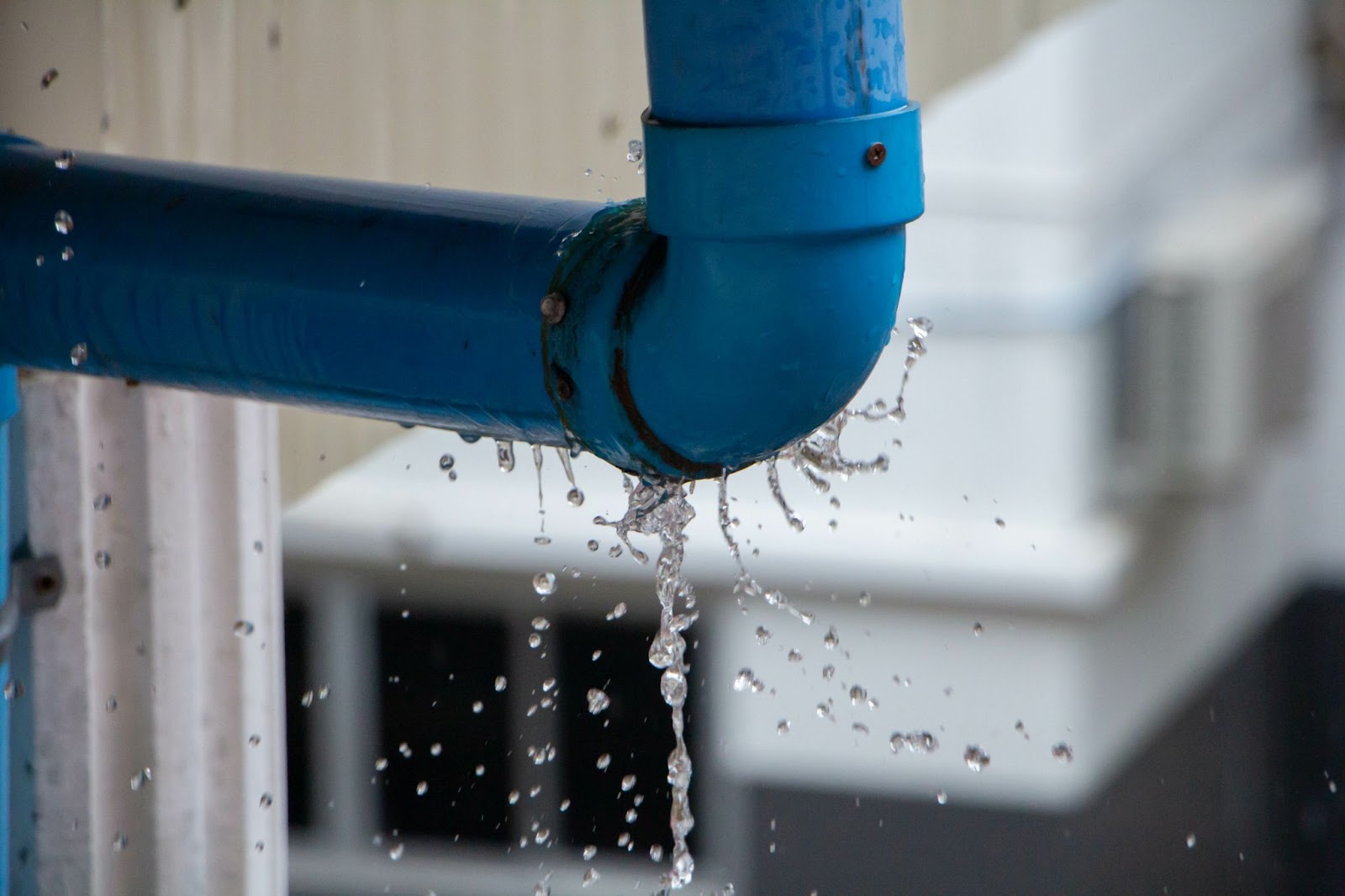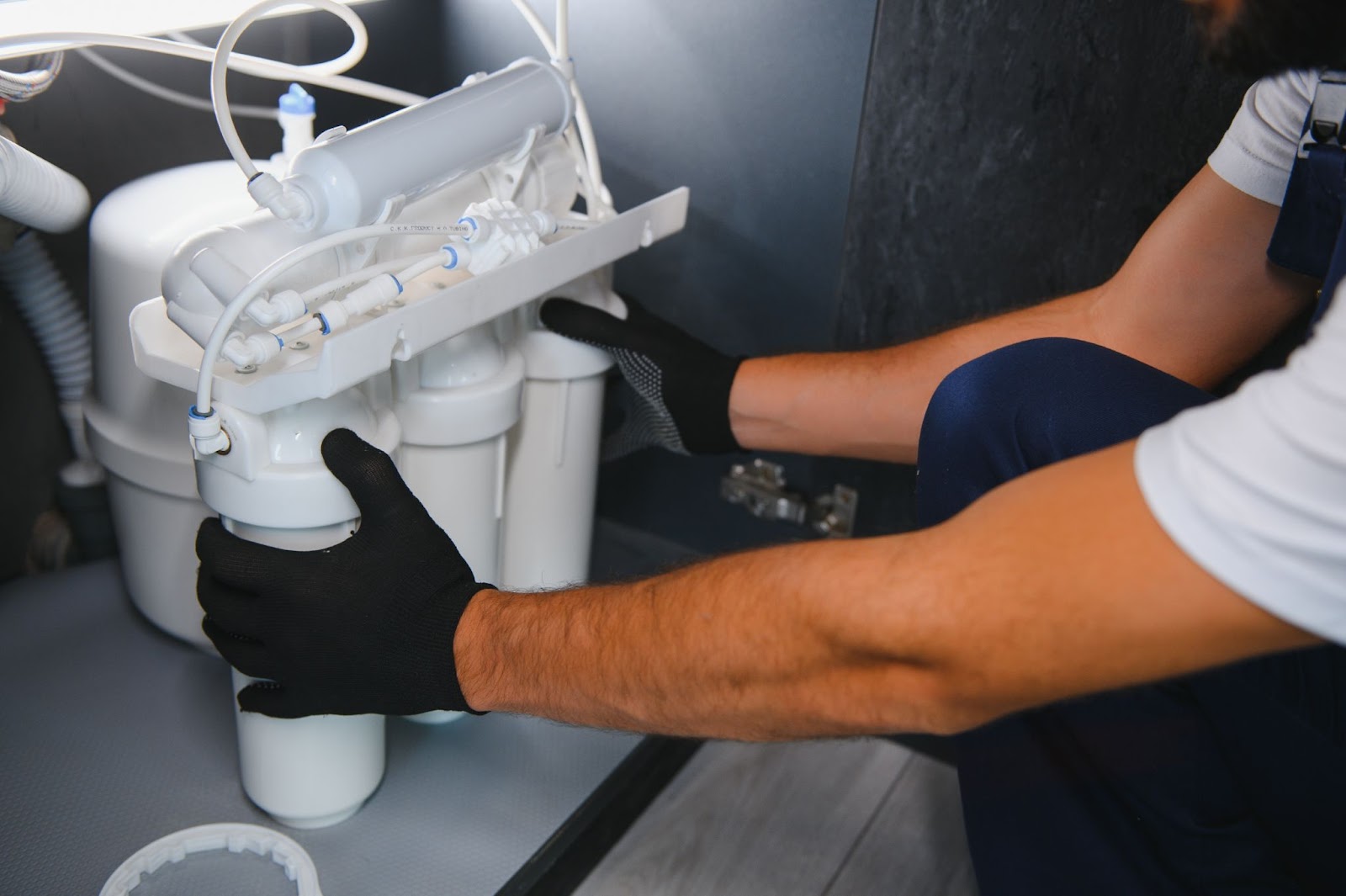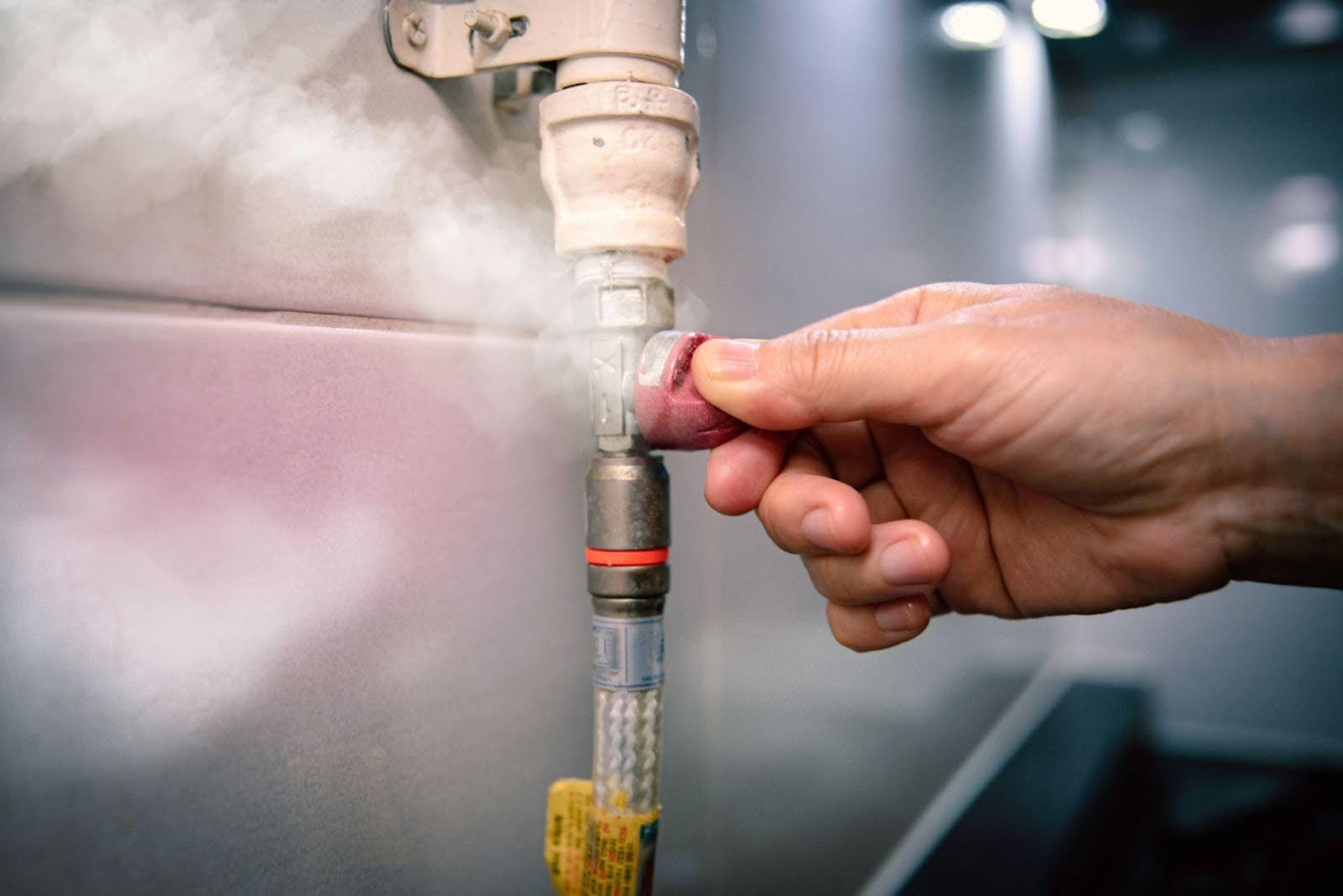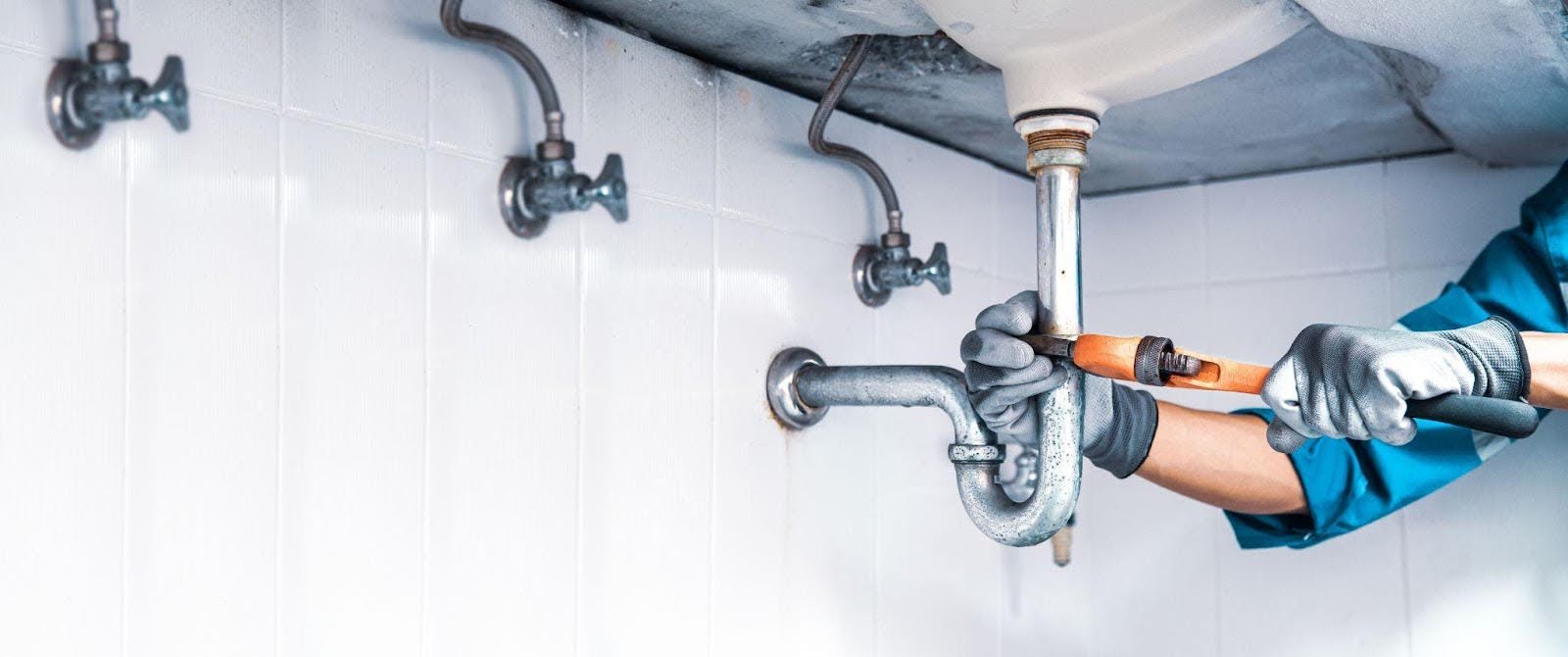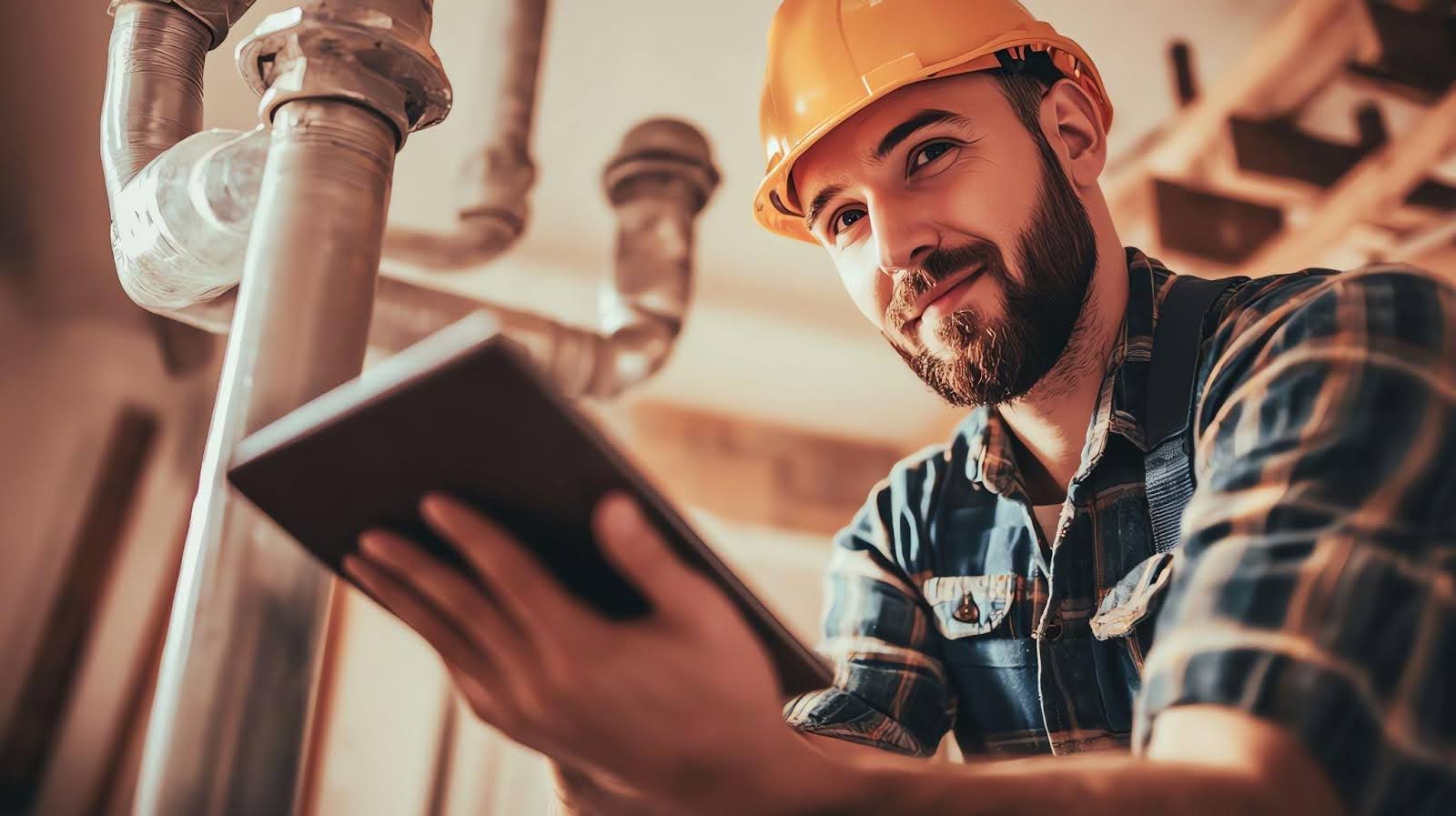Burst water pipes are one of the most stressful plumbing emergencies a homeowner can face. It happens suddenly and without warning, causing water to flood into your home and potentially leading to serious damage to walls, flooring, furniture, and even your home’s structural integrity.
A burst pipe requires immediate action, whether caused by freezing temperatures, aging pipes, or unexpected pressure buildup.
The good news is that knowing exactly what to do in those first critical moments can help you contain the situation, protect your home, and minimize costly repairs.
In this blog, we’ll walk you through the essential steps to take if your water pipes burst — from shutting off your water supply to calling a professional plumber. With this guide, you’ll be prepared to respond quickly, confidently, and safely the next time plumbing trouble strikes.
Step 1: Shut off the water supply immediately
The first — and most important — thing you should do if a pipe bursts is to shut off your home’s main water supply. Every second counts when water is gushing from a broken pipe, and the longer it flows, the more damage it can do to your floors, walls, ceilings, and belongings.
Your main water shut-off valve is usually located in one of a few common places: near the water heater, in the basement, in the garage, or along an exterior wall of your home.
In colder climates, it’s often found inside to prevent freezing. Once you’ve located the valve, turn it clockwise (to the right) until it stops. This will immediately stop the flow of water into your home’s plumbing system.

Step 2: Turn off the electricity
Once you’ve shut off the water supply, the next critical step is to turn off the electricity, especially if water is pooling near electrical outlets, appliances, or your breaker box. Water and electricity are a dangerous combination, and acting quickly will help prevent electrical shock, fire hazards, or damage to your home’s electrical system.
Start by locating your home’s main electrical panel, usually found in the garage, basement, utility room, or on an exterior wall. If you can access it safely without stepping in or near standing water, switch off the breakers to the affected areas of your home.
If you’re unsure which circuit controls which part of the house, or if water is already near the panel, shutting off the main breaker to cut power to the entire home is safest.
Important: If the area around your electrical panel is wet, do not attempt to turn off the power yourself. Leave the home immediately and call a licensed electrician or your utility company for assistance.
Step 3: Drain the remaining water
After you’ve shut off both the water supply and electricity, the next important step is to drain the remaining water from your plumbing system. This helps relieve pressure in the pipes and clears out any water that could continue to leak through the burst section. It also helps prevent further water damage while you wait for repairs.
Start by opening all the cold water faucets in your home — from sinks to tubs to outdoor spigots. Let them run until the water stops flowing. This step ensures that any water still sitting in the pipes drains out safely, rather than leaking from the burst pipe.
Next, turn off your water heater, especially if it’s electric, to avoid damaging the heating elements. Then, open all the hot water taps in your home to allow the hot water system to drain as well.
Finally, flush all your toilets a couple of times to clear water from the tanks and bowls. This step helps drain the pipes further and reduces the chances of backups or additional leaks elsewhere in your plumbing system.
Draining your system is a simple but effective way to reduce pressure, limit damage, and prepare your home for a professional repair.
Step 4: Locate the burst pipe
Once you’ve turned off the water and drained the system, your next step is to locate the source of the burst. Identifying exactly where the damage occurred can help you minimize further water damage and assist your plumber in making quick and efficient repairs.
Start by inspecting the most obvious places — areas where you see water pooling, dripping, or staining. Check under sinks, around toilets, and near exposed plumbing in basements, garages, or utility rooms. In some cases, the burst pipe may be visibly cracked, leaking, or spraying water.
If the burst pipe is hidden behind walls or ceilings, look for indirect signs of damage. These may include:
- Water stains on walls, ceilings, or floors
- Bubbling or peeling paint or wallpaper
- Sagging drywall or ceiling tiles
- Warped flooring
- Damp, musty smells
Sometimes, you may even hear a hissing or dripping sound inside the wall. If you’re unable to pinpoint the exact location but suspect a hidden leak, don’t attempt to open walls yourself.
A professional plumber can use moisture meters, thermal imaging, or acoustic sensors to locate hidden bursts without causing unnecessary damage to your home.
Quickly finding and isolating the burst area is key to preventing mold growth, structural damage, and further plumbing issues.
Step 5: Contain the water and prevent further damage
Once you’ve located the burst pipe, the next step is to contain the water and protect your home from additional damage.
Even after shutting off the main water supply, residual water continues to seep from the broken pipe, especially if it’s located within walls or ceilings. Acting fast will help you minimize costly repairs and avoid long-term issues like mold or structural deterioration.
Start by soaking up standing water with towels, mops, or a wet/dry vacuum. If water has pooled on hard surfaces like tile or concrete, be sure to dry the area thoroughly to prevent slipping or moisture damage.
For water that has soaked into carpeting or furniture, blot and lift the materials if possible to encourage airflow and reduce the risk of mold growth.
Next, move any furniture, rugs, electronics, or valuables away from the affected area. If furniture legs can’t be moved, place foil or wood blocks under them to prevent water from wicking up and causing additional staining or damage.
Set up fans and, if you have one, a dehumidifier to begin drying out the area. Proper air circulation is critical in the first 24–48 hours to prevent mold and mildew from developing.
While cleanup is underway, avoid using the damaged area until a professional plumber has made repairs and confirmed the space is safe.
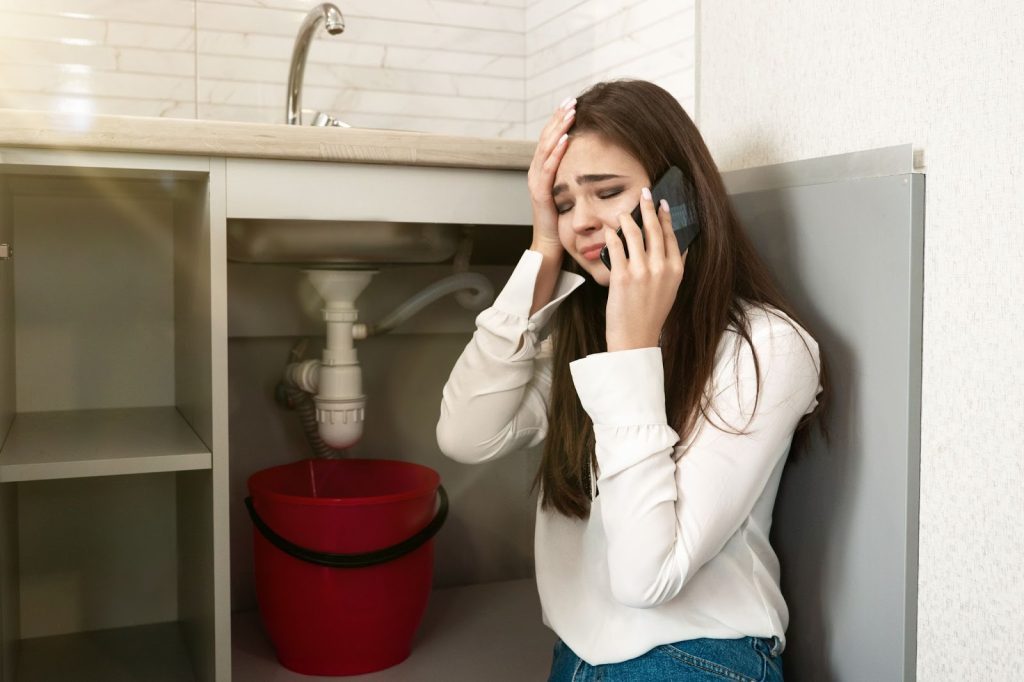
Step 6: Call a professional plumber
After you’ve contained the immediate damage and stabilized the situation, it’s time to call a professional plumber. While it’s tempting to try a DIY fix, a burst pipe is a serious issue that requires expert attention to ensure it’s fully repaired and won’t cause further problems down the road.
A licensed plumber will assess the extent of the damage and determine the best repair method, whether it involves replacing a section of pipe, re-soldering joints, or inspecting nearby plumbing for additional weaknesses.
In many cases, burst pipes are a symptom of larger issues, such as excessive water pressure, pipe corrosion, or improper installation, that a professional can identify and address.
If the pipe is hidden behind walls, ceilings, or under flooring, a plumber will have the proper tools to locate and fix the problem with minimal disruption. They may also inspect your home’s entire plumbing system to make sure no other pipes are at risk of bursting, especially in older homes or after a deep freeze.
Most importantly, professional repairs help protect your home from future leaks and keep your plumbing system up to code. Don’t wait — calling a professional plumber is the safest and most reliable way to restore your home after a burst pipe.
Call Salisbury Plumbing for fast, reliable burst pipe repairs
If you’re dealing with a burst pipe, don’t wait — water damage escalates quickly. The experienced team at Salisbury Plumbing is here to provide fast, professional repairs to get your plumbing back in working order and protect your home from further damage. We handle emergency situations with urgency, care, and expert precision.
Contact Salisbury Plumbing today for immediate assistance and peace of mind when you need it most.


